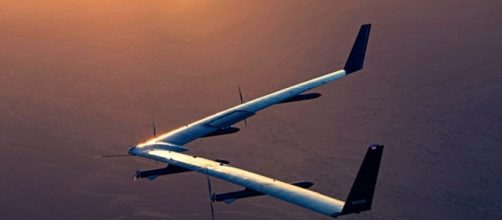Facebook has now unveiled the results of its solar-powered drone flight tests after having kept it a secret from the world for months. The company revealed that its second test, which was conducted back in May, was successful and that they were able to land the huge winged drone after flying it for one hour and 46 minutes over the skies of Arizona.
First two tests
The large winged drone, called the Aquila, initially made its maiden voyage back in June of last year. The drone's first flight was unfortunately unsuccessful as problems with its autopilot system had caused it to crash.
Facebook hadn't really made details about its first test public, but it was apparently forced to do so after the National Transportation Safety Board launched an investigation on the drone's crash landing.
The company then tinkered with the drone's autopilot software and resolved the bugs that caused it to be confused by heavy winds. Engineers also added several aerodynamic elements to the wings, which included new spoilers, and a better overall finish to the materials used. All of the upgrades had apparently worked as the drone itself was able to fly and land without problems during the second test.
Bringing the internet to the world
Mark Zuckerberg and his company want to use a fleet of the unmanned aircraft to basically send internet signals to the most remote areas of the world.
The drones, which are all equipped with communications hardware, will be able to communicate with each other using lasers, while also being able to transmit internet signals via radio frequencies.
Facebook aims to have all the drones flying for months at a time, which is why they are all equipped with solar panels that generate more than 5,000W of power to keep the propellers, avionics, lighting systems, and heaters on all day long.
The drones themselves have a wingspan that is wider than a Boeing 737. However, despite its size, the entire thing actually weighs less than 1,000 pounds. The body of the drone is made of carbon fiber and other composite materials, which also contributes to its rigidity and structural integrity.
Far from complete
The latest Test Flight saw Facebook's drone soaring at an altitude of just 3,000 feet.
This is a long way from the company's aim of having the drones fly up to 60,000 feet into the stratosphere. A lot of tests also have to be done with the communications components, propellers, and solar panels to see how they fair on prolonged flights and in different altitudes and temperatures. Facebook considers the second flight as a big milestone for the projects, but they do admit that there is still a lot of work to be done.


